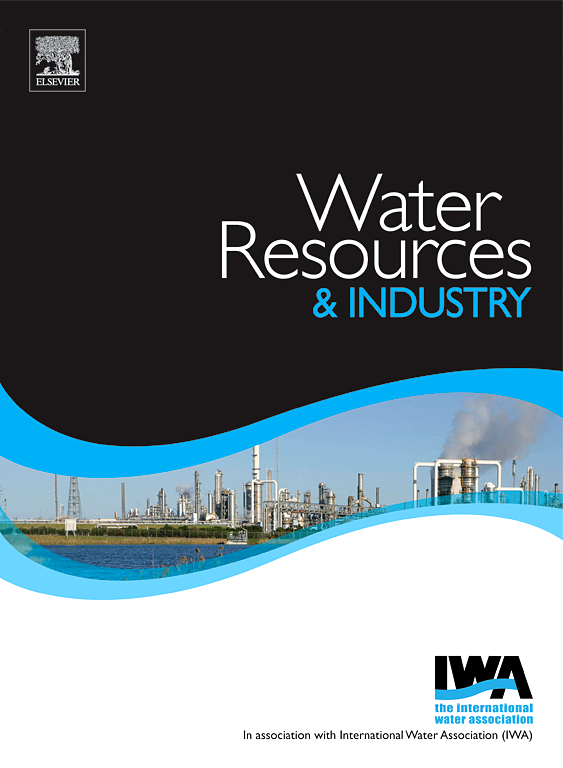用自来水和循环水龙头快速解冻食物:解冻时间和水和能源使用的比较
IF 4.5
3区 工程技术
Q1 WATER RESOURCES
引用次数: 0
摘要
冷冻是一种有效且应用广泛的食品保存方法,冷冻食品必须安全解冻。自来水法(RWM)是一种持续用冷水浇灌冷冻食物的方法,被认为是一种安全、快速的替代冰箱解冻的方法。这种解冻方法似乎通常用于食品加工和食品服务设置,但很少受到食品供应链和/或可持续性研究人员的关注。模仿RWM的循环水龙头装置已经在美国上市。我们对两种食物进行了8次解冻试验,分别是碎牛肉(2.27公斤)和海鲜混合物(0.91公斤),以比较解冻时间和水和能源的使用。解冻方法是:将食物直接放入水槽(未浸泡),将食物放入容器(浸泡),将食物放入循环水龙头和冰箱。在冰箱中解冻需要2-3天,其他方法需要74到198分钟。每次解冻试验,循环水龙头使用约9升水,RWM使用709至1466升。估计循环水龙头的能源消耗更高,但与冰箱解冻相当。在所有试验中,自来水温度都高于21°C(美国食品安全法规中RWM的最高水温),但在使用水龙头装置解冻时,循环水冷却到21°C以下。气候变化正在使一些水源变暖,需要对食品安全和食品解冻指南的影响进行研究。本文章由计算机程序翻译,如有差异,请以英文原文为准。

Quick food thawing with running water versus a recirculating faucet: Comparison of time to thaw and use of water and energy
Freezing is an effective and widely used food preservation method, and frozen food must be thawed safely. The running water method (RWM) involves continuously running cold water over frozen food and is described as a safe and quicker alternative to thawing in a refrigerator. This thawing method appears to be commonly used in food processing and food service settings, but it has received little attention from food supply chain and/or sustainability researchers. A recirculating faucet device that mimics RWM is available in the U.S. We conducted eight thawing trials with two food types, ground beef (2.27 kg) and a seafood mix (0.91 kg), to compare thawing time and use of water and energy. The thaw methods were: RWM with food placed directly in a sink (unsubmerged), RWM in a container (submerged), a recirculating faucet with submerged food, and a refrigerator. Thawing in a refrigerator took 2-3 days, and the other methods took 74 to 198 minutes. The recirculating faucet used about 9 liters of water for each thaw trial, and RWM used 709 to 1466 liters. Estimated energy use by the recirculating faucet was higher but comparable to refrigerator thawing. In all trials, tap water was warmer than 21°C (the maximum water temperature for RWM in U.S. food safety regulations), but the recirculating water cooled to less than 21°C during thawing with the faucet device. Climate change is warming some water sources, and research is needed on implications for food safety and food thawing guidelines.
求助全文
通过发布文献求助,成功后即可免费获取论文全文。
去求助
来源期刊

Water Resources and Industry
Social Sciences-Geography, Planning and Development
CiteScore
8.10
自引率
5.90%
发文量
23
审稿时长
75 days
期刊介绍:
Water Resources and Industry moves research to innovation by focusing on the role industry plays in the exploitation, management and treatment of water resources. Different industries use radically different water resources in their production processes, while they produce, treat and dispose a wide variety of wastewater qualities. Depending on the geographical location of the facilities, the impact on the local resources will vary, pre-empting the applicability of one single approach. The aims and scope of the journal include: -Industrial water footprint assessment - an evaluation of tools and methodologies -What constitutes good corporate governance and policy and how to evaluate water-related risk -What constitutes good stakeholder collaboration and engagement -New technologies enabling companies to better manage water resources -Integration of water and energy and of water treatment and production processes in industry
 求助内容:
求助内容: 应助结果提醒方式:
应助结果提醒方式:


